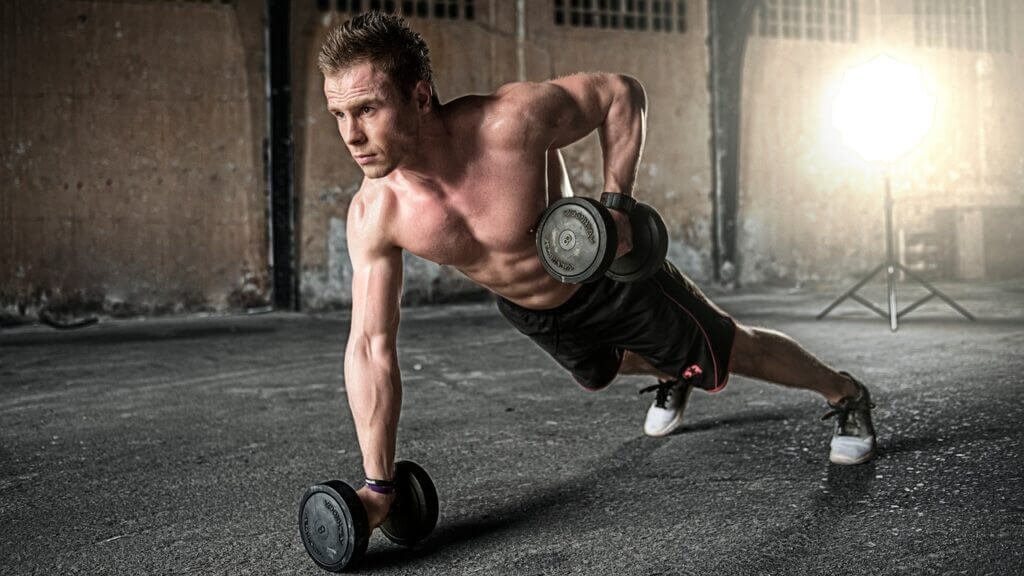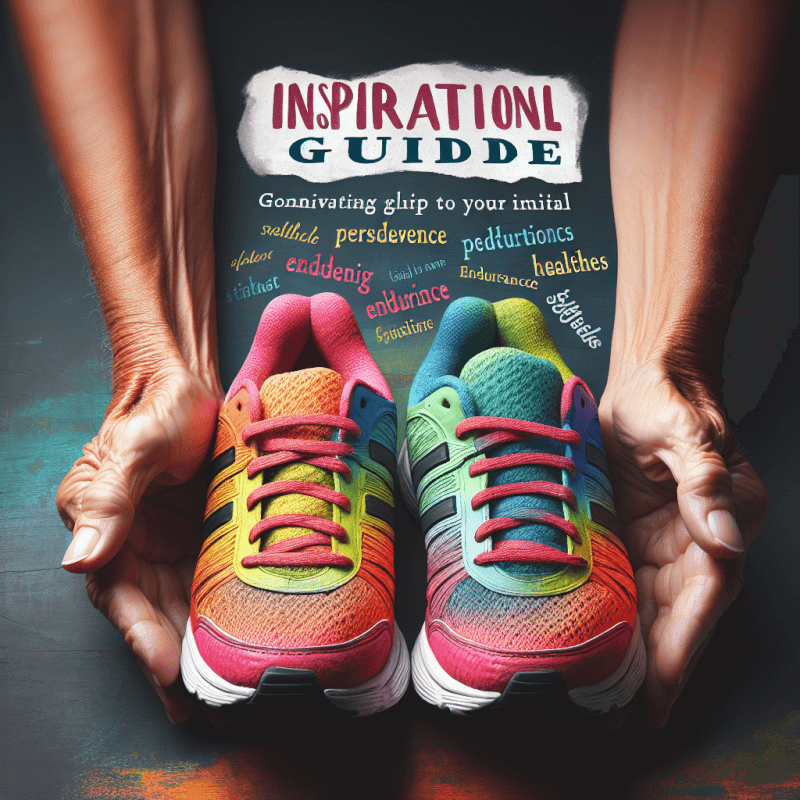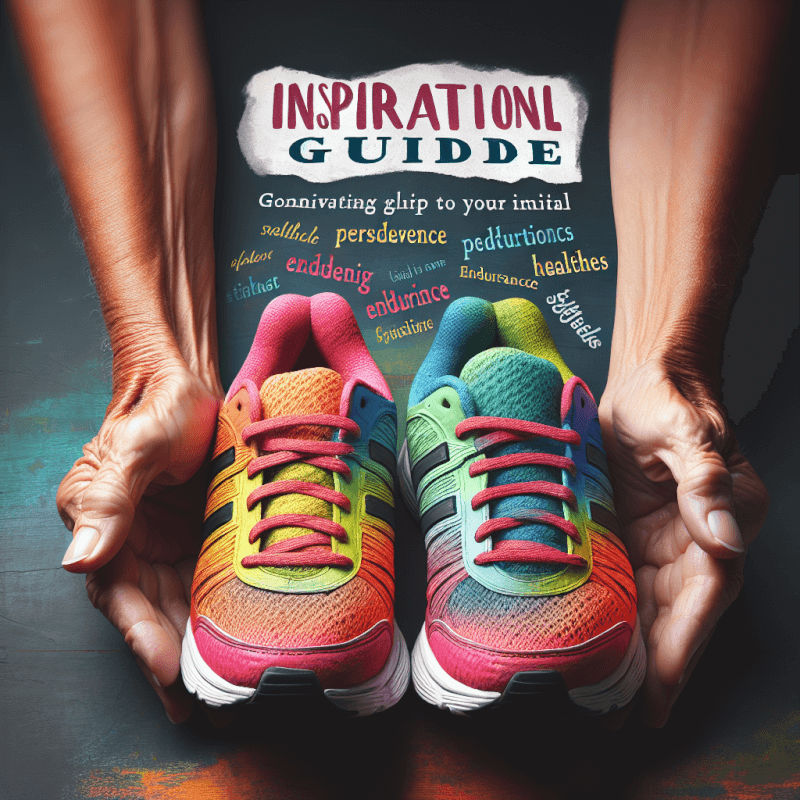Are you in your late 50s and looking to improve your fitness? Well, you’ve come to the right place! In this article, we will share some practical tips and strategies to help you get fit and stay active in your golden years. Whether you’re a seasoned gym-goer or just beginning your fitness journey, we’ve got you covered. So, lace up your sneakers and get ready to embrace a healthier lifestyle that will benefit both your body and mind. Let’s dive in!

Understanding Fitness in the Late 50s
As you enter your late 50s, it’s essential to understand the factors that can affect your fitness level. Factors such as age, lifestyle choices, and overall health can impact your ability to stay fit. However, with the right approach and a positive mindset, you can maintain or even improve your fitness level in your late 50s.
Factors Affecting Fitness
Several factors can influence your fitness level as you reach your late 50s. One of the primary factors is age. As we age, our bodies naturally experience changes in muscle mass, bone density, and metabolism. Additionally, any existing health conditions or injuries can impact your fitness journey. It’s crucial to understand and work with these factors to set realistic fitness goals and adopt appropriate exercises.
Benefits of Exercise
Regular exercise offers numerous benefits, especially as you get older. Exercise helps maintain a healthy weight, reduces the risk of chronic diseases such as heart disease and diabetes, and enhances mental well-being. Engaging in physical activity can boost your energy levels, improve your mood, and enhance cognitive function. Additionally, exercise can help maintain bone density, muscle strength, and flexibility, which are essential for maintaining overall physical function in your late 50s.
Setting Realistic Goals
When it comes to fitness, setting realistic goals is crucial. Instead of aiming for drastic transformations, focus on realistic and achievable improvements that align with your current fitness level. Start by identifying what you would like to achieve, whether it’s increasing your endurance, improving strength, or enhancing flexibility. By setting specific, measurable, attainable, relevant, and time-bound (SMART) goals, you can track your progress and stay motivated on your fitness journey.

Types of Exercise
Incorporating a variety of exercises into your routine can be beneficial for overall fitness in your late 50s. By incorporating aerobic exercises, strength training, and flexibility exercises, you can maintain a well-rounded and balanced fitness routine.
Aerobic Exercises
Aerobic exercises, also known as cardio exercises, help improve cardiovascular health and burn calories. These exercises increase your heart rate and breathing, enhancing your endurance and stamina. Some popular aerobic exercises include brisk walking, jogging, cycling, swimming, and dancing. Aim for at least 150 minutes of moderate-intensity aerobic exercise or 75 minutes of vigorous-intensity aerobic exercise per week, spread out over several days.
Strength Training
Strength training exercises are crucial for maintaining muscle mass, bone density, and overall strength. It involves using resistance to challenge your muscles and stimulate their growth. Strength training can be done using dumbbells, resistance bands, or weight machines. Aim for strength training exercises at least two days a week, targeting major muscle groups like the legs, arms, back, chest, and core.
Flexibility Exercises
As you age, maintaining flexibility becomes increasingly important. Stretching and other flexibility exercises help improve range of motion, reduce the risk of injury, and enhance overall mobility. Include exercises such as yoga, Pilates, or basic stretching routines in your fitness routine. Aim for stretching exercises at least two to three days a week, focusing on major muscle groups.
Creating a Personalized Exercise Routine
Before starting any new exercise routine, it’s important to consult with a healthcare professional, especially if you have any pre-existing health conditions or injuries. They can provide guidance tailored to your individual needs and ensure you engage in exercises that are safe and appropriate for your fitness level.
Determining Current Fitness Level
Assessing your current fitness level will help you tailor your exercise routine to your specific needs. You can evaluate factors such as endurance, strength, flexibility, and balance. Keep in mind that it’s okay to start at a beginner level and gradually progress as your fitness improves. Be aware of any limitations or discomfort during exercises, and adjust accordingly to prevent injury.
Choosing Appropriate Exercises
When selecting exercises for your fitness routine, consider your goals, preferences, and any physical limitations you may have. While it’s important to challenge yourself, it’s equally important to choose exercises that you enjoy, as it will increase your motivation to stick with your routine. Choose a mix of aerobic exercises, strength training, and flexibility exercises that target different areas of your body for a well-rounded fitness routine.

Cardiovascular Health
Maintaining good cardiovascular health is essential for overall well-being, especially in your late 50s. Engaging in cardiovascular exercise helps improve heart health, lower blood pressure, and reduce the risk of cardiovascular diseases.
Importance of Cardiovascular Exercise
Cardiovascular exercises, such as brisk walking, jogging, cycling, or swimming, help strengthen your heart and lungs, improving their efficiency. These exercises increase blood flow, oxygen delivery, and nutrient circulation throughout your body. Regular cardiovascular exercise also helps lower cholesterol levels and control blood sugar levels.
Finding Enjoyable Activities
To make cardiovascular exercise enjoyable, choose activities that you genuinely enjoy. This can include activities such as dancing, hiking, playing a sport, or even gardening. By choosing activities you love, you’re more likely to stick with your routine and make it a regular part of your lifestyle.
Gradually Increasing Intensity
When starting or progressing in cardiovascular exercise, it’s important to gradually increase intensity. Begin with low-impact exercises and slowly increase the duration and intensity over time. This approach reduces the risk of injury and allows your body to adapt gradually. Listen to your body and take breaks when needed, but also challenge yourself to progress as your fitness improves.
Building Strength
Strength training is a vital component of fitness, particularly as you age. It helps improve bone density, maintain muscle mass, and enhance overall strength and functional ability.
Benefits of Strength Training
Engaging in regular strength training exercises offers numerous benefits. It helps increase muscle mass, which can boost metabolism and aid in weight management. Strength training also improves joint stability, reduces the risk of falls and fractures, and enhances overall functional ability, making daily tasks easier to perform.
Using Resistance Bands
Resistance bands are a versatile and portable tool that can be used for strength training exercises. They provide resistance in a controlled manner, allowing you to strengthen your muscles without the need for heavy weights. Resistance bands are particularly beneficial for those who are new to strength training or have joint issues, as they provide low-impact resistance.
Bodyweight Exercises
In addition to utilizing resistance bands, bodyweight exercises are an excellent way to build strength. These exercises use your body weight as resistance and can be performed anywhere, without the need for equipment. Examples of bodyweight exercises include push-ups, squats, lunges, planks, and tricep dips. Focus on proper form and gradually progress by increasing repetitions or difficulty to continue challenging your muscles.

Improving Flexibility
Flexibility exercises should be an essential part of your fitness routine, especially as you get older. These exercises help improve joint range of motion, reduce muscle stiffness, and promote better posture.
Incorporating Stretching Exercises
Stretching exercises are a simple and effective way to improve flexibility. Perform dynamic stretches before your workout to warm up your muscles, and static stretches afterward to maintain or increase flexibility. When stretching, focus on major muscle groups and hold each stretch for 15-30 seconds without bouncing.
Yoga and Pilates
Yoga and Pilates are excellent forms of exercise that incorporate both strength and flexibility training. These disciplines focus on controlled movements, proper breathing, and body awareness. They can help improve your balance, core strength, and overall flexibility. There are various classes available, including beginner-friendly options, making it accessible for individuals of all fitness levels.
Maintaining Proper Form
When performing flexibility exercises, maintaining proper form is crucial. Make sure you’re following the correct technique and avoid any movements that cause discomfort or pain. Avoid overstretching or forcing your body into positions it is not ready for. Gradually increase your range of motion over time, respecting your body’s limits.
Utilizing Technology and Apps
In today’s digital age, technology can be incredibly beneficial in supporting your fitness journey. Various fitness tracking apps, workout videos, and online workout classes are available to help you stay motivated and track your progress.
Fitness Tracking Apps
Fitness tracking apps provide a convenient way to monitor your physical activity, track calories burned, and set goals. These apps often include features such as workout logs, step counters, heart rate monitors, and nutrition tracking. They can help you stay accountable and offer insights into your progress, making it easier to adjust your routine based on your goals.
Workout Videos
Workout videos are a fantastic resource for those looking to exercise at home or follow specific workout routines. Many fitness professionals and trainers create instructional videos on various platforms, allowing you to access a wide range of exercises and workouts. Whether you prefer cardio, strength training, or yoga, you can find videos suitable for your fitness goals and preferences.
Online Workout Classes
Online workout classes provide the convenience of attending a group exercise class from the comfort of your own home. Many fitness studios and instructors offer live or pre-recorded classes that cover a wide range of exercises and intensity levels. These classes often include options for beginners, intermediate, and advanced participants, ensuring there’s something for everyone.

Importance of Rest and Recovery
While exercise is crucial for maintaining fitness, rest and recovery are equally important components of a well-rounded fitness routine, especially as you get older. Incorporating rest days, practicing stretching and foam rolling, and getting enough sleep are essential for optimizing your fitness progress.
Understanding Rest Days
Rest days are an essential part of any exercise routine. They allow your body time to recover, repair, and adapt to the physical demands placed upon it. During rest days, focus on activities that promote relaxation, such as gentle stretching, yoga, or meditation. Avoid high-impact or strenuous activities that could potentially cause additional stress or fatigue.
Incorporating Stretching and Foam Rolling
Stretching and foam rolling are great tools to aid in muscle recovery and prevent muscle tightness or soreness. Stretching after workouts helps maintain flexibility and improves blood flow to the muscles. Foam rolling, also known as self-myofascial release, can help release muscle tension and reduce post-workout soreness. Incorporate these practices regularly to enhance your recovery process.
Getting Enough Sleep
Adequate sleep plays a vital role in your overall health and fitness. During sleep, your body undergoes numerous essential processes, including tissue repair, hormone regulation, and muscle growth. Aim for 7-8 hours of quality sleep each night to support optimal recovery and ensure you have enough energy for your workouts.
Making Healthy Dietary Choices
Exercise alone is not enough to maintain fitness in your late 50s. Proper nutrition is equally important. Focus on consuming a balanced diet that includes all major food groups, emphasizes nutrient-dense whole foods, and accounts for individual dietary needs.
Consuming a Balanced Diet
A balanced diet consists of a variety of foods from different food groups, including fruits, vegetables, whole grains, lean proteins, and healthy fats. These foods provide essential vitamins, minerals, antioxidants, and macronutrients necessary for overall health and well-being. Aim to incorporate a colorful variety of fruits and vegetables, choose lean protein sources, and opt for whole grains over refined grains.
Hydration Importance
Proper hydration is often overlooked but is crucial for overall health and fitness. Water plays a vital role in regulating body temperature, lubricating joints, and transporting nutrients and oxygen throughout your body. Aim to drink at least 8 cups (64 ounces) of water per day, adjusting based on activity level, climate, and individual needs.
Meal Planning and Portion Control
Meal planning and portion control can help you make healthier choices and maintain a balanced diet. By planning your meals in advance, you can ensure you have nutritious options readily available, reducing the likelihood of making unhealthy food choices. Additionally, practicing portion control allows you to enjoy a wide variety of foods while ensuring you consume an appropriate amount of calories for your individual needs.
Staying Motivated and Overcoming Challenges
Staying motivated and overcoming challenges is essential for maintaining a long-term fitness routine. There will inevitably be times when motivation wanes, or setbacks occur, but with the right strategies, you can bounce back stronger.
Finding an Exercise Buddy
Exercising with a friend or joining group fitness classes can be a great way to stay motivated. Having a workout buddy creates accountability and makes exercising more enjoyable. You can encourage each other, celebrate achievements, and have someone to lean on during challenging times.
Rewarding Yourself
Set milestones and reward yourself when you achieve them. Celebrate your progress with non-food rewards, such as purchasing new workout gear, treating yourself to a massage, or enjoying a relaxing day at the spa. These rewards can help reinforce positive behaviors and provide a sense of accomplishment.
Dealing with Setbacks
Setbacks are natural and will happen from time to time. It’s essential to embrace setbacks as learning opportunities and not allow them to derail your progress. Instead of giving up, reflect on what caused the setback and make any necessary adjustments to prevent repeating the same mistakes. Seek support from friends, family, or fitness professionals to help you stay motivated during challenging times.
In conclusion, fitness in your late 50s is attainable and beneficial for your overall health and well-being. By understanding the factors affecting your fitness, incorporating a variety of exercises, creating a personalized exercise routine, prioritizing cardiovascular health, building strength, improving flexibility, utilizing technology, ensuring proper rest and recovery, making healthy dietary choices, and staying motivated, you can enhance your fitness level and enjoy a more active and fulfilling lifestyle. Remember, the key is to start where you are, set realistic goals, and progress gradually, catering to your individual needs and preferences. With dedication and consistency, you can achieve and maintain fitness in your late 50s and beyond.


